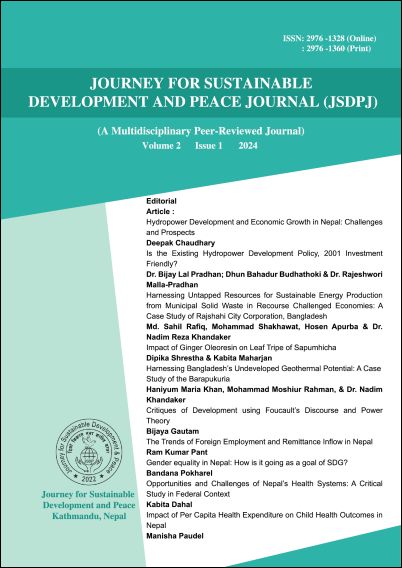Impact of Ginger Oleoresin on Leaf Tripe of Sapumhicha
DOI:
https://doi.org/10.3126/jsdpj.v2i1.63241Keywords:
Ginger, indigenous food, leaf tripe (Sapumhicha), self-life, nutritional compositionAbstract
The main objective of the study is to examine the impact of ginger on the leaf tripe of 'SapuMhicha'. SapuMhicha is a special dish consisting of buffalo leaf tripe stuffed with bone marrow; it is boiled and fried. This dish is popular in Kathmandu Valley, especially in Newar community. The use of ginger makes this dish tasty and hygienic. It is indigenous knowledge and practice; with this, it can be preserved for a certain time period. Ginger is valued in nutritional importance as it contains fiber. Ginger contributes to minimizing Microbial growth that helps to stimulate the digestive system. The use of ginger in a tripe recipe makes low microbial. This study focuses on this indigenous knowledge of how ginger enhances leaf tripe to use for a long time. The impact of ginger on leaf tripe is tested using the AOAC direct moisture determination method on different days from 1 to 16 at normal room temperature. The result was that the impact of ginger on tripe leaf was positive i.e. low microbial growth was noticed. The result showed that ginger enhances the shelf-life of tripe at room temperature as it can be stored for a certain period of time and remain suitable for use.
Downloads
Downloads
Published
How to Cite
Issue
Section
License
This license enables reusers to distribute, remix, adapt, and build upon the material in any medium or format for noncommercial purposes only, and only so long as attribution is given to the creator.




